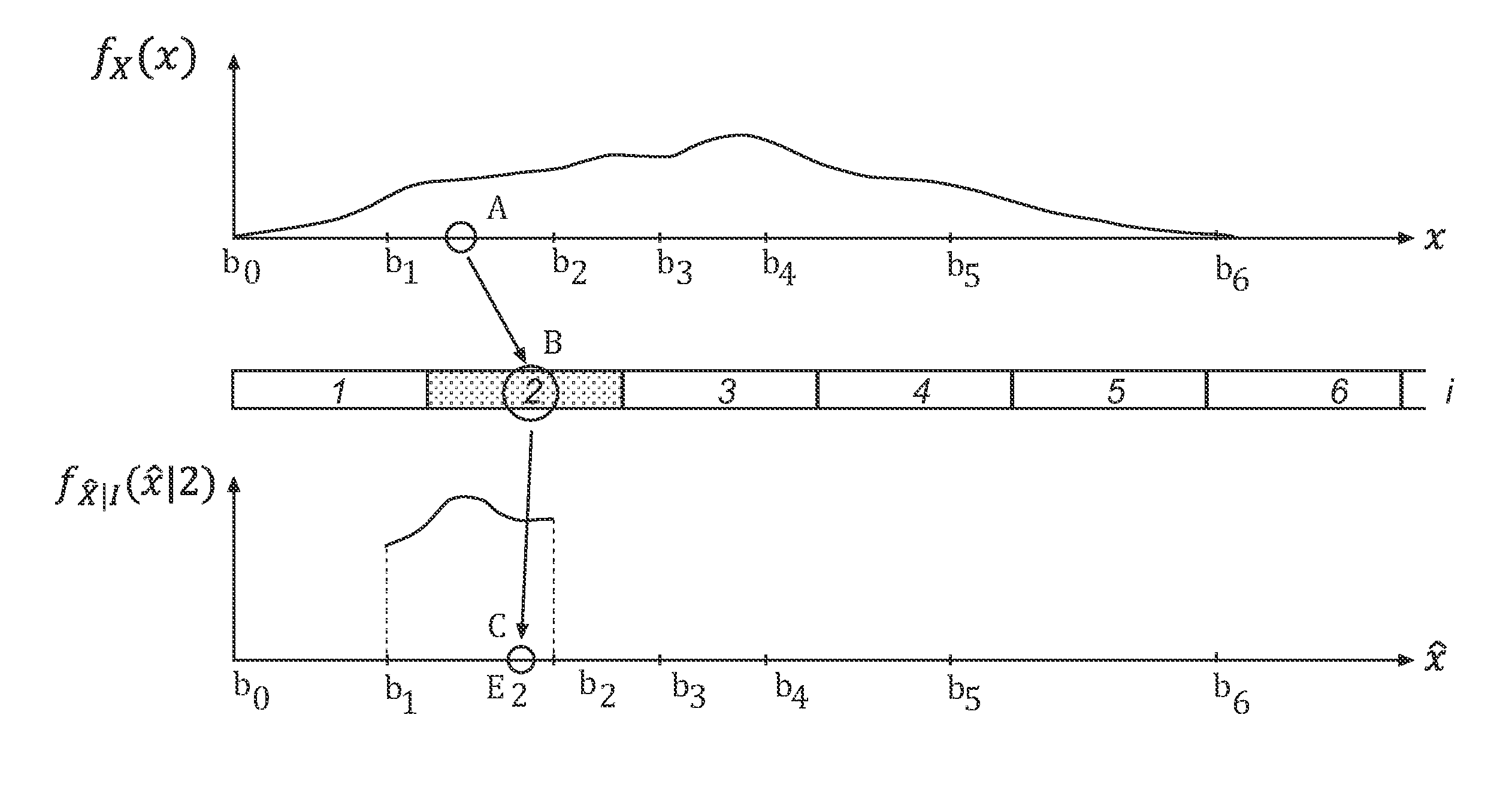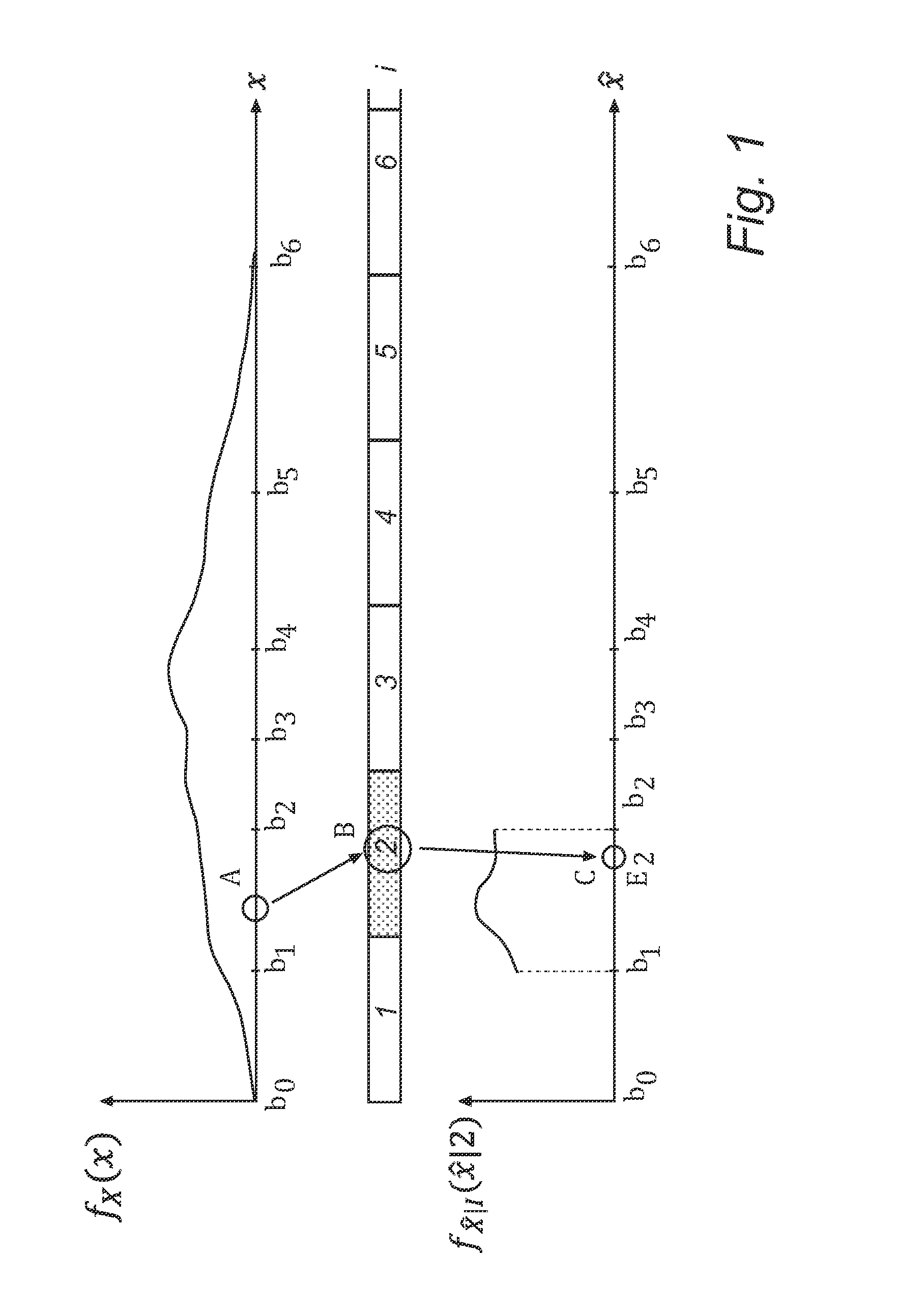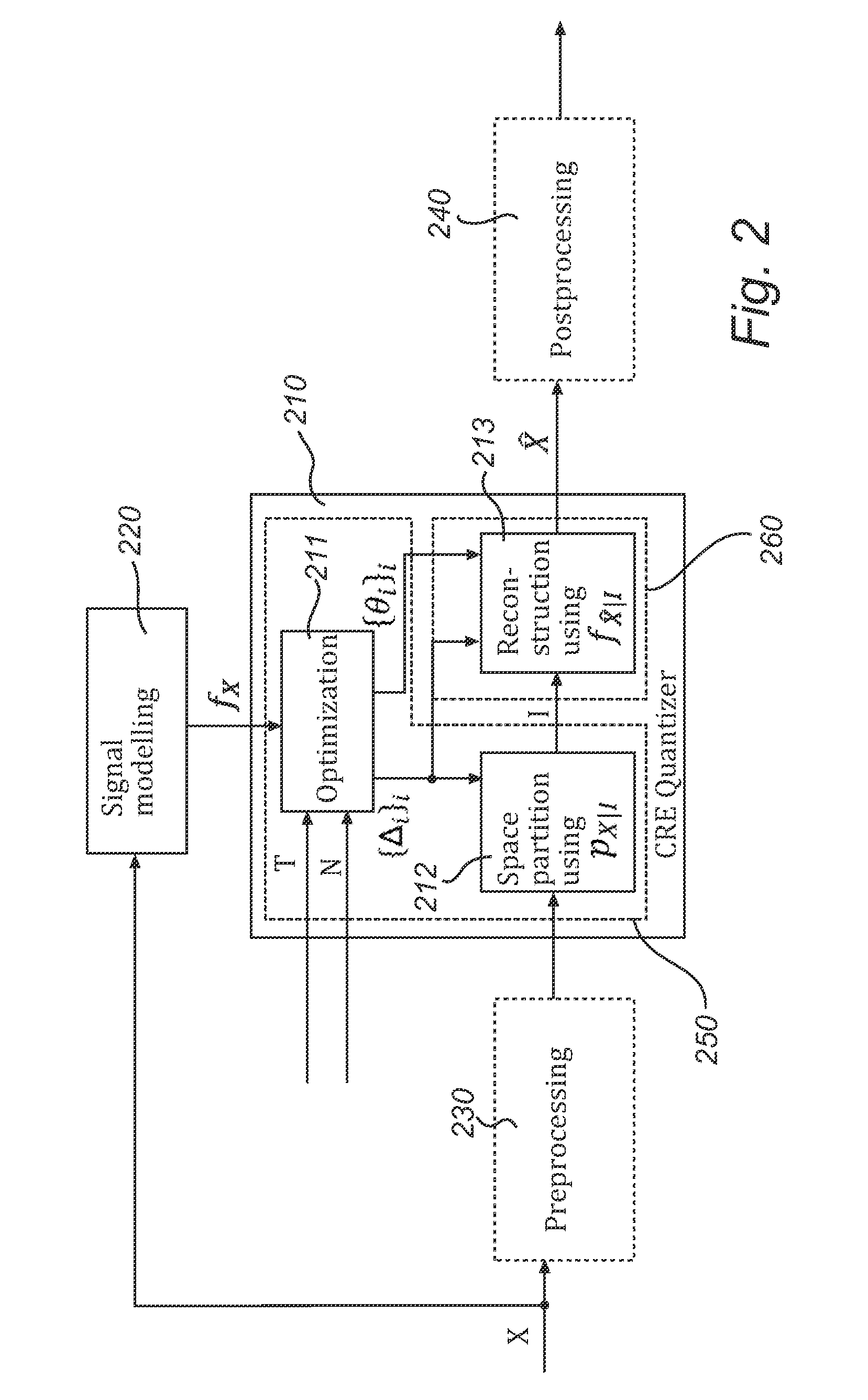Coding and decoding of source signals using constrained relative entropy quantization
a relative entropy and quantization technology, applied in the field of quantizing signals, can solve the problems of increasing the mean square error, rather than circumventing the problem, and reducing the processing efficiency of source signals, so as to reduce the noise of quantization, alleviate or eliminate one or more of the above-mentioned deficiencies and drawbacks, and reduce the effect of quantization nois
- Summary
- Abstract
- Description
- Claims
- Application Information
AI Technical Summary
Benefits of technology
Problems solved by technology
Method used
Image
Examples
embodiment 1
2. A method , further including:
[0082]receiving an estimated probability distribution of the source signal,
[0083]wherein the reconstruction probability distribution corresponds to the estimated probability distribution of the source signal.
3. A method according to embodiment 1, further including:
[0084]receiving an estimated probability distribution of the source signal; and
[0085]determining said reconstruction probability distribution based on the estimated probability distribution of the source signal and in such manner that a quantization error is minimized.
4. A method according to embodiment 1, wherein said quantization cells are delimited by values b0, b1, b2, . . . , bM and the reconstruction probability distribution is proportional to [θi(x−Ei)2−1]−1 in the ith cell,
[0086]where Ei denotes a conditional expectation of the source signal in the ith cell, and b0, b1, . . . , bM, θ1, θ2, . . . , θM are solutions of
minb0,b1,…,bM,θ1,θ2,…,θMDsubjecttoK_<TandR<N,
where D denotes a...
embodiment 5
6. A decoder ,
[0089]further comprising a second receiving section for receiving an estimated probability distribution of the source signal,
[0090]wherein the random number generator is adapted to use a reconstruction probability distribution corresponding to the estimated probability distribution of the source signal.
7. A decoder according to embodiment 5, further comprising:
[0091]a second receiving section for receiving an estimated probability distribution of the source signal; and
[0092]means for determining said reconstruction probability distribution based on the estimated probability distribution of the source signal and in such manner that a quantization error is minimized.
8. A decoder according to embodiment 5, wherein said quantization cells are delimited by values b0, b1, b2, . . . , bM and the reconstruction probability distribution is proportional to [θi(x−Ei)2−1]−1 in the ith cell,
[0093]where Ei denotes a conditional expectation of the source signal in the ith cell, and b...
embodiment 10
11. A method , wherein said measure of the difference between the estimated probability distribution of the source signal and the reconstruction distribution is a relative entropy between the estimated probability distribution of the source signal and the reconstruction probability distribution.
12. A computer-readable medium having stored thereon computerreadable instructions which, when executed on general-purpose computer, perform the method of any one of embodiments 1 to 4, 10 and 11.
13. A method according to any one of embodiments 1 to 4 and 10 to 12, wherein source signal values and quantization indices are n-dimensional vectors, n being an integer greater than 1.
14. An encoder (250) for encoding a source signal consisting of a sequence of source signal values, the encoder including:
[0097]an optimizing section (211) adapted to receive an estimated probability distribution of the source signal and to determine, in part, a partition into quantization cells by minimizing the quant...
PUM
 Login to View More
Login to View More Abstract
Description
Claims
Application Information
 Login to View More
Login to View More - R&D
- Intellectual Property
- Life Sciences
- Materials
- Tech Scout
- Unparalleled Data Quality
- Higher Quality Content
- 60% Fewer Hallucinations
Browse by: Latest US Patents, China's latest patents, Technical Efficacy Thesaurus, Application Domain, Technology Topic, Popular Technical Reports.
© 2025 PatSnap. All rights reserved.Legal|Privacy policy|Modern Slavery Act Transparency Statement|Sitemap|About US| Contact US: help@patsnap.com



